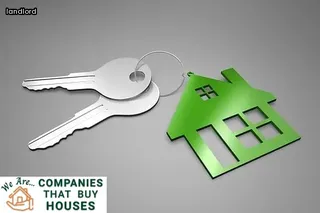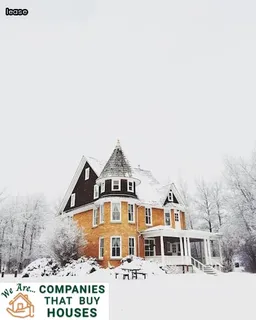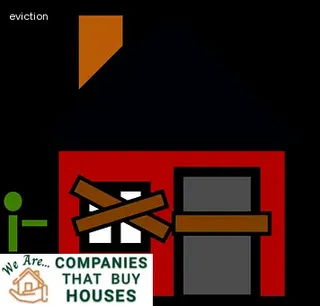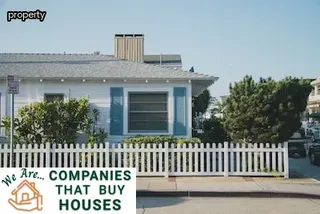The relationship between a landlord and tenant is a contractual one based on mutual trust, respect and understanding. In order to protect the rights of both parties, it is important for landlords in South Dakota to understand the impact of tenant damage on their property rights.
Tenant damage can take many forms, from physical damage to the property itself or to items within the rental unit, to non-payment of rent or additional charges. As a landlord, it is important to be aware of how South Dakota's laws regarding tenant damage can affect your rights as the owner of a rental property.
This includes understanding what constitutes tenant damage, how much compensation you are allowed by law and what action you may take against tenants who fail to fulfill their obligations under their lease agreement. Additionally, it is important for landlords in South Dakota to be aware of any local ordinances that may affect their rights as well as any state laws that govern landlord/tenant relationships.
Understanding these laws will help ensure that both parties are protected and that landlords are able to maximize their return on investment in rental properties.

Rental agreements are an important document for both the tenant and the landlord when it comes to understanding property rights in South Dakota. These written contracts outline the expectations of both parties, including but not limited to rent amounts, duration of rental period, and responsibilities of each.
The rental agreement also outlines what constitutes damage to the property and what actions will be taken if such damage occurs. It is important for all parties involved to understand their rights and obligations as outlined in the rental agreement in order to avoid any potential issues with tenant damage.
Knowing how rental agreements impact property rights can help tenants in South Dakota better protect their interests when signing a lease or entering into other residential arrangements. It is also important for landlords to understand their obligations regarding tenant damage so they can create secure contracts that protect them from any potential losses.
Security deposits are an important tool for protecting landlords and property owners from tenant damage. In South Dakota, a security deposit is defined as any money or other form of payment that a tenant pays to the landlord prior to renting a property.
The security deposit is intended to cover any damage done by the tenant during their tenancy. It also covers any rent or fees owed by the tenant upon ending the tenancy.
Security deposits can be used to repair damage caused by tenants, replace lost or damaged items, clean up the premises, and cover unpaid rent or fees. Landlords are required to provide tenants with an itemized list of damages and costs for which the security deposit will be used before collecting it.
Tenants have the right to dispute deductions made from their security deposit if they find them to be unfair or unsubstantiated. In South Dakota, landlords must return security deposits within 30 days after tenants vacate the premises unless otherwise specified in their lease agreement.
Understanding how security deposits work is essential for both landlords and tenants in order to protect their rights in relation to property damage in South Dakota.

Tenants in South Dakota have the right to live in a safe and secure environment where they can enjoy freedom from structural damage and other hazards. It is important to understand the impact of tenant damage on property rights, as this can cause significant financial strain for both landlords and tenants.
For example, a landlord may be responsible for repairing any damages caused by tenant negligence or abuse of the property, and must also cover any costs associated with cleaning up after the tenant has vacated. Tenants are therefore responsible for making sure that they take care of their rented space properly and follow all applicable laws, regulations, and rules relating to tenant-landlord relationships.
The consequences of failing to do so may include eviction proceedings or legal action against the tenant. On the other hand, landlords must also ensure that their premises are maintained in a safe condition for tenants and visitors alike; failure to do so could lead to costly repairs and potential liability issues.
Ultimately, understanding the impact of tenant damage on property rights in South Dakota is essential for both tenants and landlords alike in order to protect their respective interests.
Quiet enjoyment is an important concept when it comes to understanding the impact of tenant damage on property rights in South Dakota. It refers to the right of a tenant or lessee to inhabit a property free from interference or disruption by either the landlord or other tenants.
This includes the right to use, possess, and enjoy the premises without any disturbance. Quiet enjoyment also encompasses protection against unreasonable noise, nuisances, waste, and even certain types of repairs that can result in an interruption of service.
Furthermore, landlords are obligated to protect a tenant's quiet enjoyment and must take whatever steps necessary to ensure that their tenants are not subject to unnecessary disturbances while occupying their properties. Understanding the concept of quiet enjoyment helps both tenants and landlords better understand how damages caused by tenants may impact their respective rights and responsibilities under South Dakota law.

When it comes to understanding the impact of tenant damage on property rights in South Dakota, the law states that landlords must provide habitable living conditions for their tenants. This includes making any necessary repairs to keep the property safe and in good condition.
If a tenant causes any damage to the property, then the landlord may be able to deduct from their security deposit to cover some of the costs associated with repairing or replacing items. However, if a landlord fails to make necessary repairs in order to maintain habitability, then they could be liable for damages caused by those same issues.
Ultimately, both parties should strive for a harmonious relationship by ensuring that all necessary repairs are completed in a timely manner.
When it comes to understanding the impact of tenant damage on property rights in South Dakota, landlords have certain rights and responsibilities that they must abide by. First, landlords are required to provide tenants with a safe and habitable dwelling, including making necessary repairs and keeping common areas in good condition.
They must also ensure that their rental property is in compliance with all applicable laws, such as safety regulations and building codes. Landlords are responsible for collecting rent payments from tenants on time and mitigating any damages caused by tenants.
Additionally, they must make sure that the premises are maintained properly and respond promptly to any complaints or requests from tenants. When a tenant breaches their lease agreement or causes significant damage to the property, a landlord has the right to terminate the lease agreement early or seek reimbursement for any losses incurred due to the tenant's actions.
Ultimately, understanding the impact of tenant damage on property rights in South Dakota requires an understanding of both landlord rights and responsibilities.

When it comes to understanding the impact of tenant damage on property rights in South Dakota, there are a few key points that landlords should keep in mind. It is important to have a thorough understanding of landlord-tenant law and any relevant regulations.
If a tenant causes damage to the property, landlords may be able to terminate the tenancy agreement and seek compensation for the damages. Landlords should ensure that they have adequate insurance coverage in order to protect themselves from financial loss due to tenant damage.
Additionally, it is important for landlords to document any damages caused by the tenant and provide notice of termination in accordance with state laws. Furthermore, if a landlord seeks legal action against their tenant for damages caused, they should be aware of their rights and obligations under the law.
By taking these steps, landlords can ensure that they are taking all necessary measures when terminating a tenancy due to tenant damage.
Before signing a lease agreement and renting a property, tenants should ask several questions to ensure they are aware of their rights and responsibilities in South Dakota. Landlords may have certain expectations regarding the condition of the property upon move-out and if those expectations are not met, the tenant may be liable for damages.
As such, it is important to understand what constitutes damage, how much will be deducted from the security deposit, and whether or not they can dispute any deductions made. Additionally, tenants should also inquire about any additional fees associated with returning keys or early termination of the lease.
Lastly, potential renters should make sure that their landlord carries necessary insurance in case of fire or other natural disasters that may occur during tenancy. Knowing these key points can help tenants protect their legal rights and avoid costly mistakes when leasing a property in South Dakota.

When it comes to avoiding rental listing scams in South Dakota, understanding the impact of tenant damage on property rights is key. Knowing your rights as a property owner can help protect you from being taken advantage of or scammed.
Familiarising yourself with the laws and regulations around tenant damage can help you identify when something isn't right. Being aware of potential issues that could arise and how to handle them can also help prevent any future problems from occurring.
It's important to look out for red flags such as significant discrepancies between what was promised in the rental listing and what you actually receive upon signing the agreement. Additionally, research any prospective tenants thoroughly so that you are aware of their credit score, past rental history and other pertinent information before making a final decision.
Taking the time to prepare yourself beforehand can help save time, money and stress in the long run.
South Dakota landlord tenant laws are designed to protect the rights of tenants and landlords. A key part of these laws is understanding the impact of tenant damage on property rights.
South Dakota has specific rules regarding how much a landlord can charge for damages, whether it is nonpayment-related or not. Tenants must also understand their responsibilities when it comes to paying for repairs due to tenant-caused damage.
The state requires that landlords provide written notice prior to filing an eviction action, as well as provide tenants with an opportunity to remedy any violations. Additionally, South Dakota has rules in place that limit the amount of security deposit a landlord can collect from each tenant and dictate how it must be stored and returned upon move out.
It is important for both parties to be aware of all applicable laws so that their rights are protected and tenants know what to expect before signing a lease agreement.

In order to minimize the potential for property damage caused by tenants in South Dakota, it is essential for landlords to take steps to ensure that they are conducting effective tenant screening and background checks. Through comprehensive evaluation of credit and criminal records, as well as previous rental histories, landlords can gain valuable insight into a tenant's likelihood of causing harm to property.
Additional measures such as reference checks, employment verification, and income verification can also be beneficial in assessing a prospective tenant's risk level. It is important to consider not only the monetary costs associated with damages caused by tenants, but also the emotional cost of dealing with such an incident.
By taking all necessary precautions upfront through effective tenant screening and background checks, landlords can protect their rights while minimizing the impact of any potential damages caused by tenants.
As a South Dakota landlord, it is important to have the right forms and documents to protect your property rights in case of tenant damage. Tenant damage can cause a variety of issues for landlords, including financial losses, legal claims, or even criminal charges if the damage is severe enough.
It is essential to understand the potential implications of tenant damage on your property rights in order to take effective action. Landlords must have access to the necessary South Dakota landlord forms and documents that will help protect their interests in these cases.
These forms may include a rental agreement outlining tenant obligations and responsibilities, an inventory checklist detailing all items included in the rental space, a security deposit agreement outlining how deposits will be handled, and any other relevant documents that help ensure your rights as a landlord are protected. Having the right forms and documents in place can help you better understand the impact of tenant damage on your property rights in South Dakota and make sure you are adequately prepared for any potential incidents.

Understanding the impact of tenant damage on property rights in South Dakota is an important issue for landlords, tenants, and real estate professionals across the nation. The laws governing landlord-tenant relationships in South Dakota are based on both federal and state legislation.
Landlords must be aware of their rights under the law to protect their property from damage by tenants. Tenants must also be aware of their responsibilities that come with any rental agreement, such as abiding by terms regarding maintenance and repairs.
Both parties should also understand how security deposits factor into tenant damage and what protections exist for landlords if a tenant fails to meet their obligations. Furthermore, it is vital that all parties understand any specific regulations or laws established by local municipalities during the tenancy period in order to avoid costly disputes or legal action being taken against either party.
It is crucial that all involved parties familiarize themselves with the rules and regulations governing landlord-tenant relationships in South Dakota in order to ensure fair treatment of all involved parties.
In South Dakota, property rights are a significant legal issue that landlords should be aware of. When it comes to tenant damage, landlords must understand the potential effects it can have on their rights as a property owner.
It is important for landlords to recognize the laws surrounding tenant damage and take the necessary steps to protect their property rights. Landlords in South Dakota must keep an eye out for any signs of tenant damage, such as intentional vandalism or malicious destruction of property.
This type of damage can result in costly repairs and put the landlord at risk of being sued by tenants or other parties. It is also important for landlords to be aware of what remedies they may have under South Dakota law if they suffer any damage due to tenant negligence or improper use.
In order to ensure that they receive full compensation for any damages caused by tenants, landlords in South Dakota should consult with an experienced attorney who can provide guidance on how best to proceed in these matters and help protect their rights as a property owner.

South Dakota has specific laws that protect the rights of landlords and tenants. It is important that both parties understand the impact of tenant damage on property rights in South Dakota.
Landlords have a right to seek compensation for any damages caused by their tenants, provided they have taken reasonable measures to ensure proper upkeep and maintenance of their property. Tenants, on the other hand, should be aware that they are liable for any intentional or negligent damage they may cause to a rental property.
The South Dakota Landlord-Tenant Act outlines what is considered reasonable wear and tear versus damage when it comes to rental properties and goes into detail about how landlords must handle security deposits. Additionally, tenants should be aware of the notice period required for eviction proceedings as outlined by South Dakota law as well as other legal protections afforded to them under fair housing laws in the state.
While landlord-tenant laws can seem complicated, understanding them can help both sides avoid disputes down the line and protect their rights accordingly.
In South Dakota, renters are subject to certain habitability standards that ensure their safety and comfort. Common issues include mold and mildew, water damage, plumbing problems, inadequate heating and cooling systems, infestation of pests or rodents, and structural deficiencies like cracks in the walls or ceilings.
All of these can lead to significant property damage if not addressed promptly. Tenants must be aware of their rights and responsibilities with respect to these matters as they could be held liable for repairs.
Furthermore, landlords must abide by state regulations when it comes to keeping rental properties up to code and maintaining safe living conditions. Understanding the impact tenant damage has on property rights is essential for any landlord or tenant in South Dakota.

Eviction in South Dakota is a complex process that requires the landlord to adhere to the state statutes and regulations. In the event of tenant damage, landlords have certain rights that must be respected.
The first step in the eviction process is for the landlord to give notice to the tenant of their violation. This notice may include remedial actions or a demand for payment of damages.
If these demands are not met, then the landlord can proceed with filing an eviction petition with the court. Once an eviction petition has been filed, it will be reviewed by a judge who will determine if an eviction is warranted based on state law and any relevant facts presented in court.
After an order of eviction has been issued, a sheriff's deputy will then enforce it by delivering a writ of possession to the tenant, giving them a certain amount of time to vacate the property before forcible removal may take place. Understanding these steps in South Dakota's eviction process is critical for landlords who wish to protect their property rights when faced with tenant damage or other violations.
When preparing for a unit inspection with your landlord, it is important to understand the impact that tenant damage can have on property rights in South Dakota. Tenants are responsible for any damage caused to the rental unit during their tenancy, whether intentional or accidental.
The landlord must be able to prove that the damage was caused by the tenant in order to seek compensation from them. It is also important to note that tenants may not be held liable when certain damages are beyond their control, such as normal wear and tear or damages caused by extreme weather events.
In any case, tenants should take care of their rental unit and make sure it is clean and well-maintained at all times. Additionally, tenants should keep records of all repairs and maintenance done during their tenancy, as this can help protect them from liability in the event of damage caused by a third party or natural disasters.
By being aware of potential issues and taking proactive steps to mitigate them, tenants can help ensure their property rights in South Dakota are protected.

Mold is a serious problem in rental properties in South Dakota, and understanding the potential impact of tenant damage on property rights is essential. The effects of mold on buildings can be diverse and costly, ranging from weakened structural integrity to respiratory health concerns.
In addition, tenants may be held responsible for the costs associated with damages they cause to the property. Tenants should be aware of their rights and responsibilities concerning mold remediation when renting a property in South Dakota.
Property owners also need to understand their legal obligations under state law and how to properly address mold issues that arise within their rental units. Landlords must adhere to all applicable tenant protection regulations and provide timely repairs or replacement of any damaged or malfunctioning building components.
Ultimately, both tenants and landlords must take proactive steps to protect their respective interests if they are to avoid costly disputes over tenant damage and property rights in South Dakota.
In South Dakota, landlords must abide by the laws of the state when it comes to repairs and damages caused by tenants. The South Dakota Landlord Tenant Act regulates how long landlords have to make repairs.
According to this law, a landlord has 30 days to repair any damage caused by a tenant or other individuals living in the property. After that time period, the tenant has the right to make the repairs themselves and deduct the cost from their rent payment.
This is known as ‘repair and deduct’. However, before taking this route, tenants must provide written notice to the landlord informing them of their intention to repair and deduct from their rent payment.
Landlords are also required to keep rental properties up-to-date with respect to health and safety codes. If a tenant notices a hazard in their rental property, they should inform their landlord so that appropriate action can be taken in a timely manner.
By understanding these laws, both landlords and tenants can ensure that their rights are protected when it comes to tenant damage in South Dakota.

South Dakota is considered to be a landlord friendly state, with laws that protect the rights of landlords in the event of tenant damage. South Dakota has specific statutes that provide landlords with recourse when tenants cause harm to their property.
Under these laws, landlords can take legal action against tenants for any damages or destruction caused by the tenant's negligence or intentional behavior. Landlords have the right to seek compensation for financial losses, as well as recover any costs associated with repairs and replacements due to damages done by tenants.
In addition, South Dakota also allows landlords to collect rent from security deposits if there is evidence of tenant damage on the property. The law also provides tenants protection against landlord abuse and ensures that they are not held responsible for damages beyond their control.
Overall, South Dakota offers a favorable environment for landlords to operate in, given its landlord-friendly statutes and tenant protections.
In South Dakota, landlords have specific rights and responsibilities regarding tenant damage to their property. It is important for tenants to understand the law so that they can protect their own rights in these situations.
Under South Dakota law, a landlord does not have the right to enter a tenant's rental unit without permission or providing reasonable notice. However, there are some exceptions when it is necessary for the landlord to enter the unit for inspection or repairs or if there is an emergency such as a fire or water leak.
Landlords should be aware that entering without permission could be considered trespassing, which could lead to legal action from the tenant. Additionally, if a landlord discovers damage done by a tenant during an unauthorized entry, this may not be valid grounds for eviction under South Dakota law.
It is important for both tenants and landlords to be aware of their rights and responsibilities in order to protect themselves in case of any damage done to rental property in South Dakota.
In South Dakota, landlords are legally obligated to provide written notice to tenants when they must move out of a rental property. This is usually done in the form of an eviction notice and it must abide by certain legal standards in order for it to be valid.
Generally, the amount of time required for a tenant to vacate the premises after receiving this notice is determined by their lease agreement. However, if no lease exists, the landlord must give at least three days' notice for most tenants, although this may vary depending on the circumstances.
It's important for both landlords and tenants to understand their rights and obligations under South Dakota law so that they can protect themselves from potential disputes over tenant damage or other property related issues.
A: Landlords in South Dakota have the right to deduct the cost of repairing any damages that tenants cause from their security deposit, as long as the deduction is reasonable and documented.